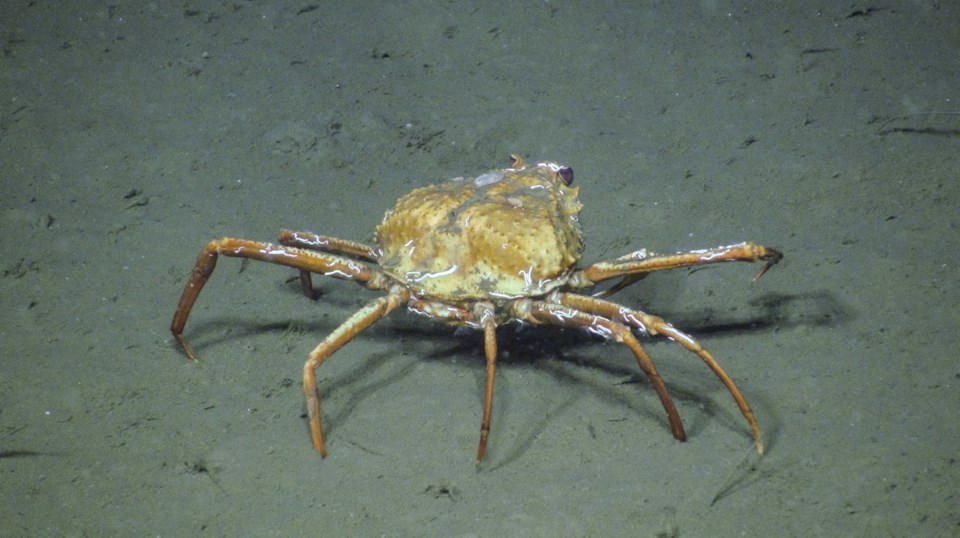Crabs found feeding on methane-laced bacteria in deep waters off Vancouver Island are turning upside down previous ideas of the deep-ocean food chain.
A new study from researchers at Ocean Networks Canada at the University of Victoria and the Oregon State University reveals evidence of snow crabs, also known as tanner crabs, feeding on bacteria that rely on methane for their food source.
The crabs were 1.2 kilometres deep along a stretch of the ocean floor off Vancouver Island called Clayoquot Slope. Cameras attached to cables along the ocean floor and linked to receiving stations operated by Ocean Networks Canada in Port Alberni and UVic provided the picture proof of the crabs’ feeding behaviour.
Fabio De Leo, senior scientist at Ocean Networks Canada and co-author of the study, published last week in the scholarly Frontiers in Marine Science, said the main source of nutrition for deep-water creatures is food from above.
De Leo said ocean plankton live near the ocean surface and utilize light energy from the sun. When they die, the plankton sink to the ocean floor as particulate matter, becoming the main food source for crabs and other species.
“This rain of organic material settles on the deep sea floor and most of the deep sea species utilize this material,” he said.
Scientists say phytoplankton might become more scarce due to climate change.
However, there is another source of energy along the margins of the continental plates: hydrogen-rich methane that bubbles up at sites scientists call “seeps.”
De Leo said these seep sites — 1,500 have been discovered in the past two years — can be found all along the continental plate from the waters off California to Alaska.
Methanotrophic bacteria that live along the seeps have evolved to break down methane.
A variety of species, including clams and mussels, rely directly on the energy provided by the bacteria.
But it was still a surprise to see the crabs feeding at the methane seeps.
Researchers captured and collected specimens and analyzed their bodily tissue. They found specific chemical markers that were traced to the methanotrophic bacteria.
De Leo said this means the crabs are transporting and introducing this methane-derived organic material into the ocean-bottom food chain as they move about.
He noted the crabs are commercially harvested, mostly in the U.S., so the methane-derived organic material is making its way into the human food chain.
“It’s also very likely, since we import crab from the U.S., that we might be eating it as well,” he said.



